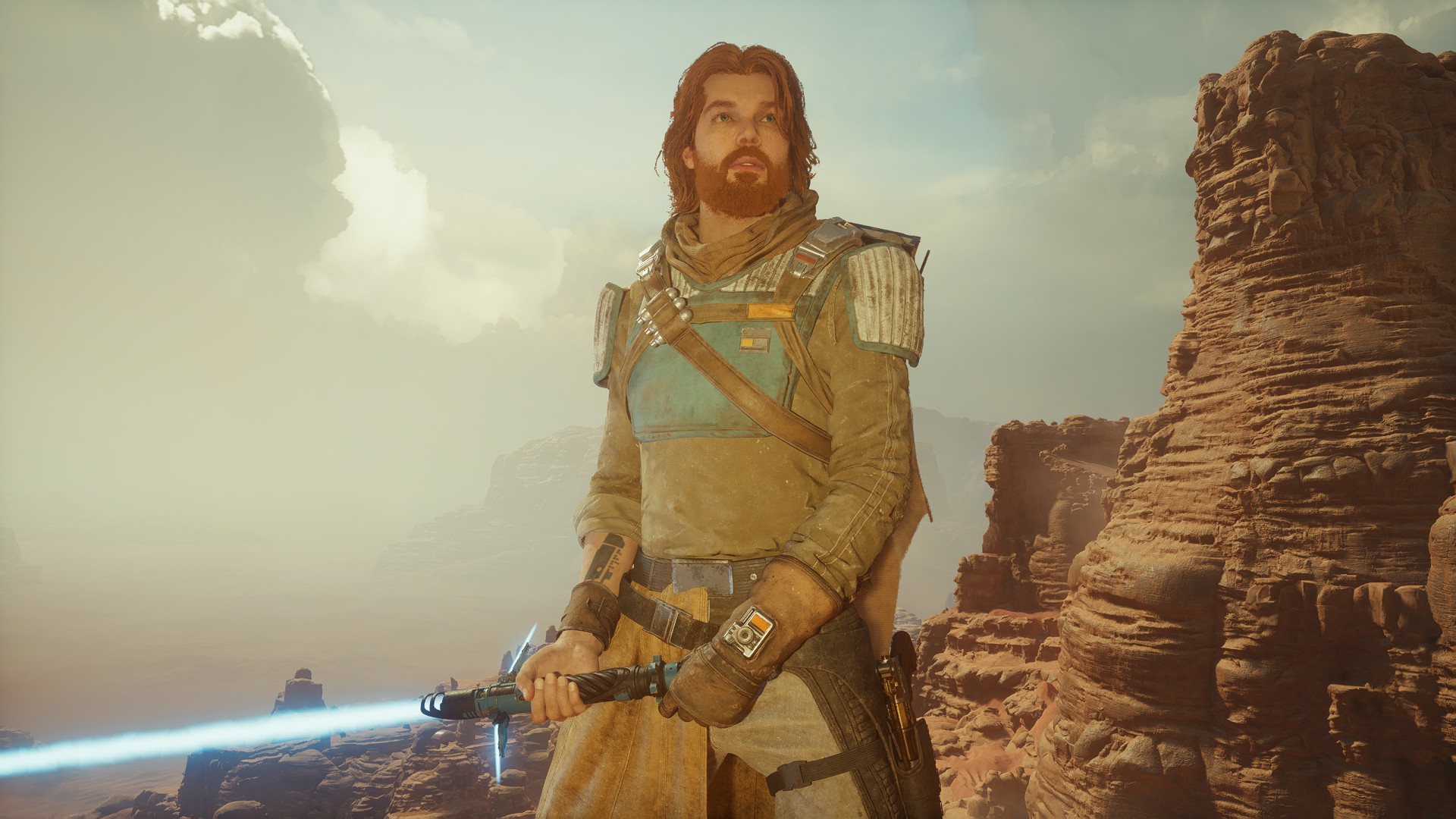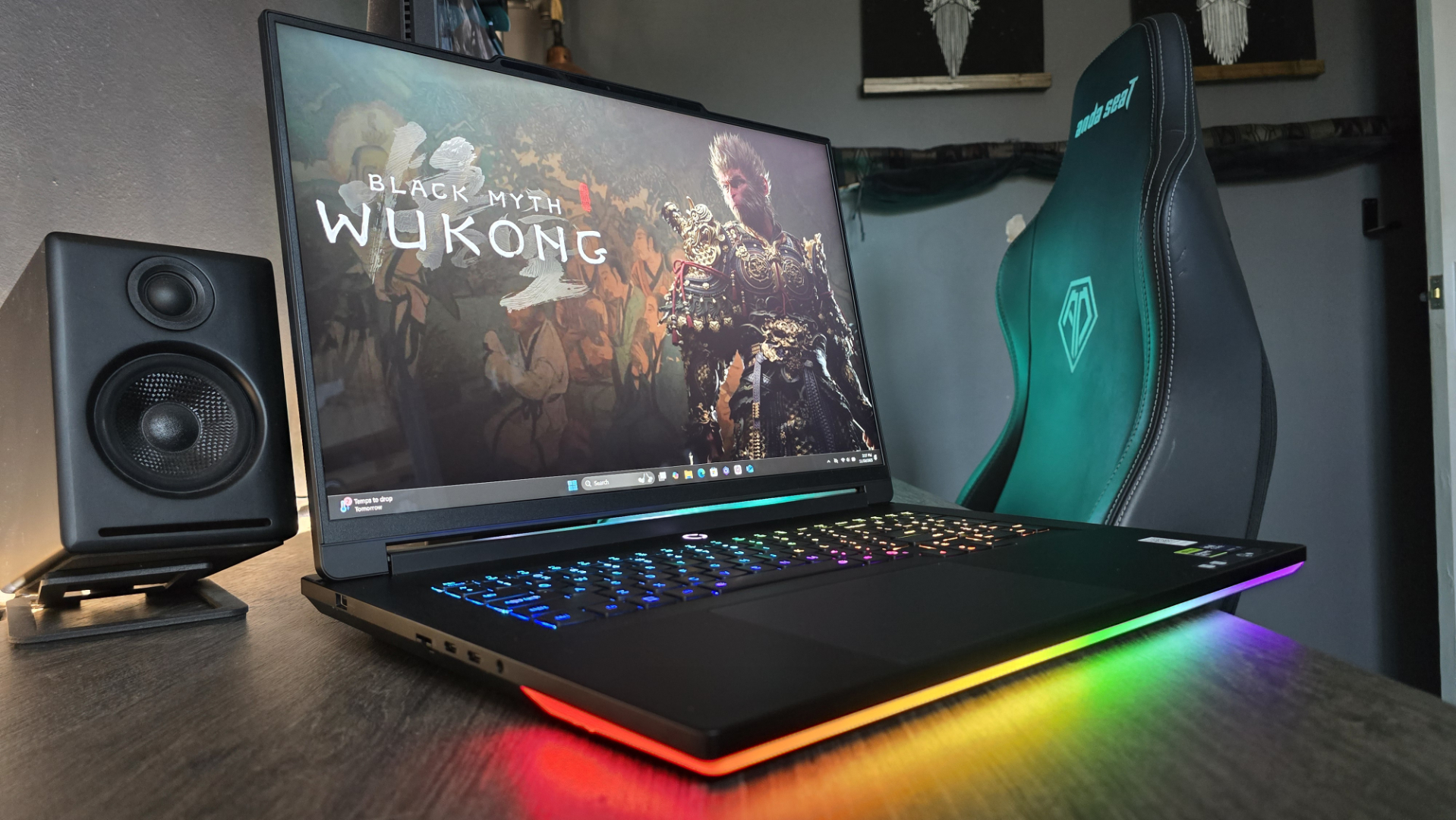Our Verdict
Star Wars Jedi: Survivor is an excellent sequel and a fun Star Wars story, but maybe wait for better performance.
PC Gamer's got your back
What is it? A third-person Star Wars adventure with soulslike combat.
Release date April 28, 2023
Expect to pay $70/£65
Developer Respawn Entertainment
Publisher Electronic Arts
Reviewed on GeForce RTX 2080 SUPER, i9-9900KS, 32GB RAM
Steam Deck Unsupported
Link Official site
Star Wars Jedi: Survivor is arriving at a time when there's too much Star Wars, and most of it's not good. The Mandalorian has gotten too cheesy in its third season, the Boba Fett and Obi-Wan shows were toothless side stories, and enthusiasm around the next wave of movies feels, at best, muted. Jedi: Survivor bucks this trend. It's one of the best things to happen to the series in years, and easily the best modern Star Wars game.
At a glance Jedi: Survivor seems like it falls squarely on the pulpy, safer side of Star Wars—the gifted jedi with untapped potential, faithful droid companion, and swashbuckling crew certainly paint that picture, but there's more to Cal Kestis. Jedi: Survivor doesn't shy away from the darkest chapter of Star Wars history, finds humor in an unfair world, and sometimes succumbs to helplessness.
It's not a story about fighting the Empire as much as coping with its dominance, grappling with the futility of rebellion, and questioning what's left to fight for. The modern Star Wars media that this feels closest to is Andor, though it's not as ambitious in its storytelling or as cynical. Unfortunately, those themes take a backseat through the middle of the story while Cal Kestis and crew entertain the deranged tantrums of a skin-deep evil guy with a red lightsaber, reminding us that this is still Uncharted in space.
But man, is it damn good space Uncharted. Better, in fact, because Jedi: Survivor breaks free of the Naughty Dog trends 2019's Fallen Order chased. Yes, Cal climbs up crumbling buildings and swings on ropes (especially in the opening hours), but he also double jumps, air dashes, wallruns, and grapple hooks all over the place. There's an almost equal ratio of combat to platforming, and both things are fun this time.
Jedi: Survivor revisits an era when third-person action games were designed like jungle gyms—bottomless death pits flanked by that special kind of wall you can climb on, platforms that move for no reason at all, floating balloons that slingshot you across the sky. Respawn has resurrected the big-budget 3D platformer, and it's glorious.
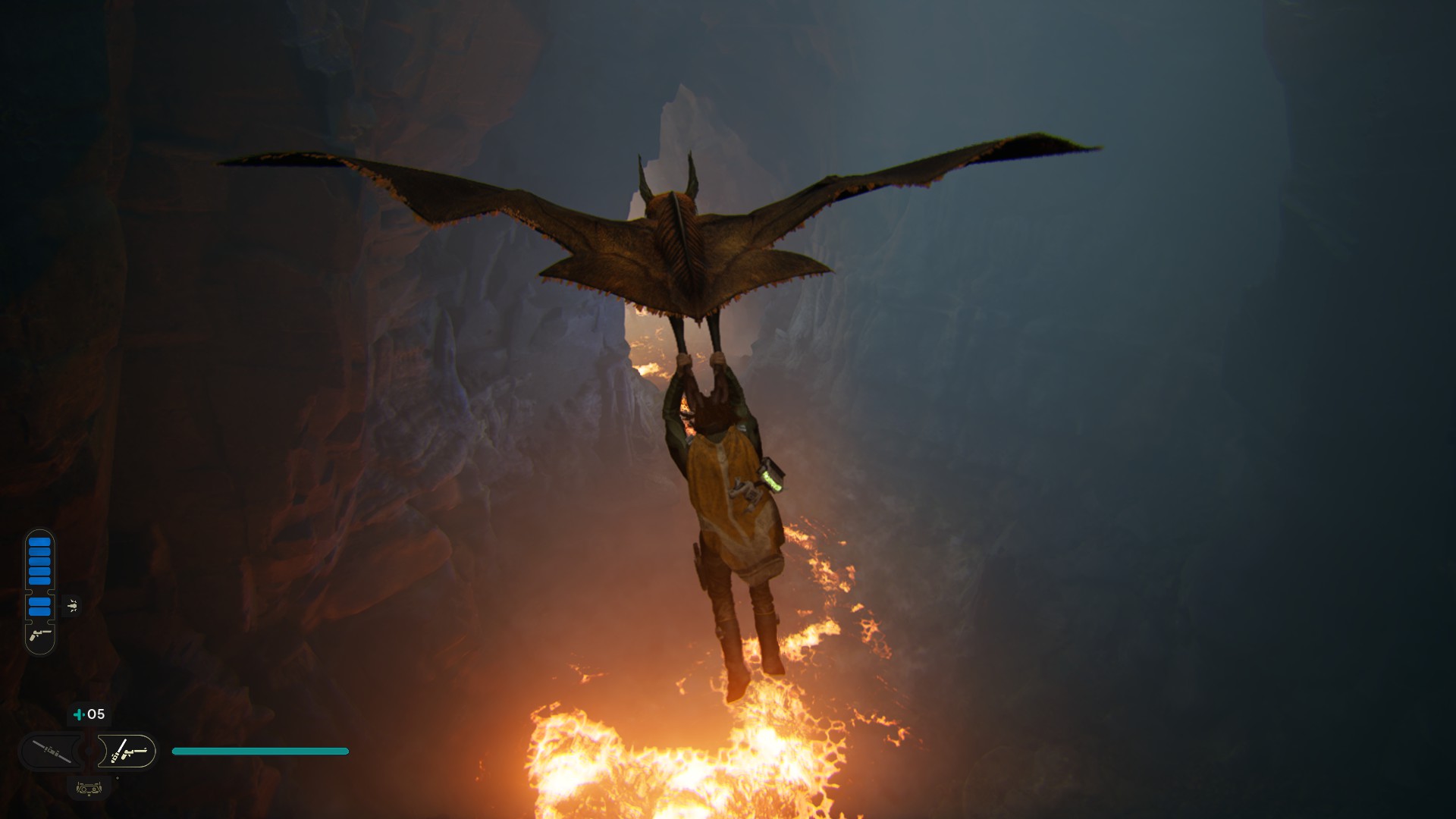
Planetside
Much of Jedi: Survivor's platformer spirit is felt in its hub world of Koboh, a frontier planet in the midst of a turf war between stormtroopers and raiders wielding reprogramed prequel droids. You might be surprised to find out that half (if not more) of the game takes place on Koboh, but that's because it's packing multiple full-sized levels, side quests, secret areas, puzzle rooms, and optional boss battles. It's deep, wide, and technically an open world, but not a boundless sandbox. It's more like a collection of linear levels connected to a central area like spokes on a wheel—a PS2-style platformer without the loading screens, essentially.
The only thing Jedi: Survivor's missing are trails of floating gems or coins to draw my eye to optional areas. Instead, Respawn has made a dozen-or-so sidequests and bounty hunts that take you to lesser-explored corners of the map. Sometimes the quests come with a bit of story setup from a Koboh local, but they're often just a tip to go cave diving for treasure or a heads up about a particularly nasty droid on the loose. Rewards are usually underwhelming perks like "more block meter", a new pair of pants, or tiny health bar upgrades, but Koboh's mini dungeons and environmental puzzles are fun enough that I sought them out constantly.
Keep up to date with the most important stories and the best deals, as picked by the PC Gamer team.
I did enjoy playing dress up with Cal, though. He has expanded his horizons beyond ponchos, and can how be fitted with any combination of shirts, jackets, pants, and hairstyles. Similarly, Cal's lightsaber, blaster, and BD-1 himself can be customized with dozens of different parts and materials. The details are immaculate and I'm sure a bigger Star Wars fan than me will find a specific a middle chunk lightsaber piece and recognize an obscure reference, but I found a setup I liked early on and rarely changed it, which speaks to a general loot problem in Jedi: Survivor. You never know if the next chest Cal opens is holding a permanant upgrade, new ears for BD-1, or a handlebar mustache.
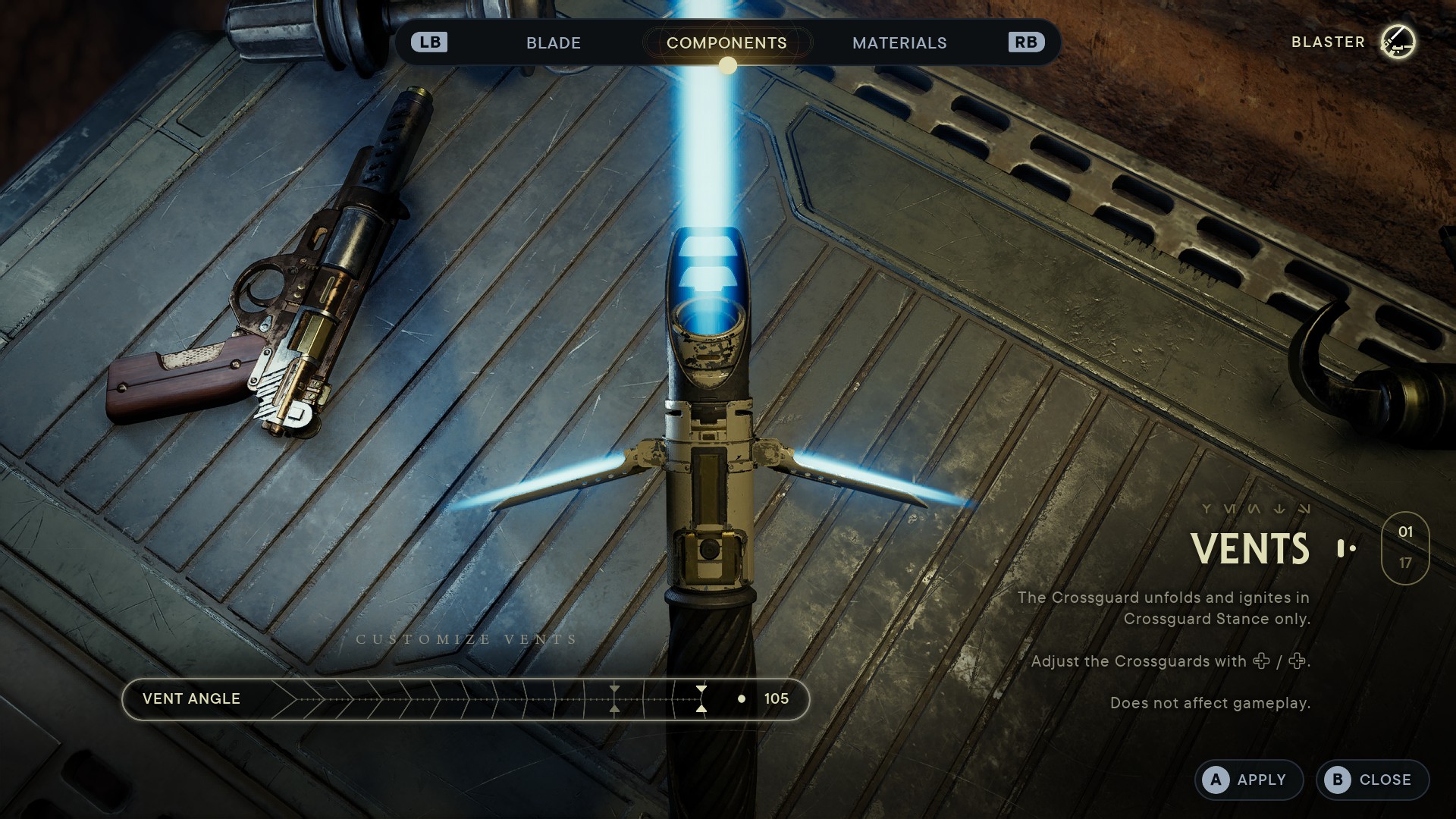
Some of my favorite Jedi: Survivor moments came from poking around a side path on my way to the bigger mission. I was always on the hunt for these little purple rifts that teleport Cal to a dream-like world for platforming or combat challenges. Here, Respawn's level design drops the Uncharted act in favor of Neon White—crucibles of timed jumps, dashes, and grapple skills that push Jedi: Survivor's remarkably fun platforming chops to the extreme. Respawn has come a long way from Fallen Order's lethargic moveset.
A big reason getting around is so fun is that backtracking is extremely easy. In Fallen Order, the frequency of return trips meant I had to go through the same fights and clamber through the same locations four or five times. Jedi: Survivor speeds things up with fast travel between checkpoints and way more shortcuts.
Maybe too many shortcuts, actually. You'll find a new one every five to ten minutes, almost always in the form of a zipline or rope. They're so ubiquitous that you essentially never have to repeat any significant climb twice. Shortcuts are undeniably convenient for cleaning up sidequests, but their overuse makes the spaces between them feel artificial and somewhat arbitrary.
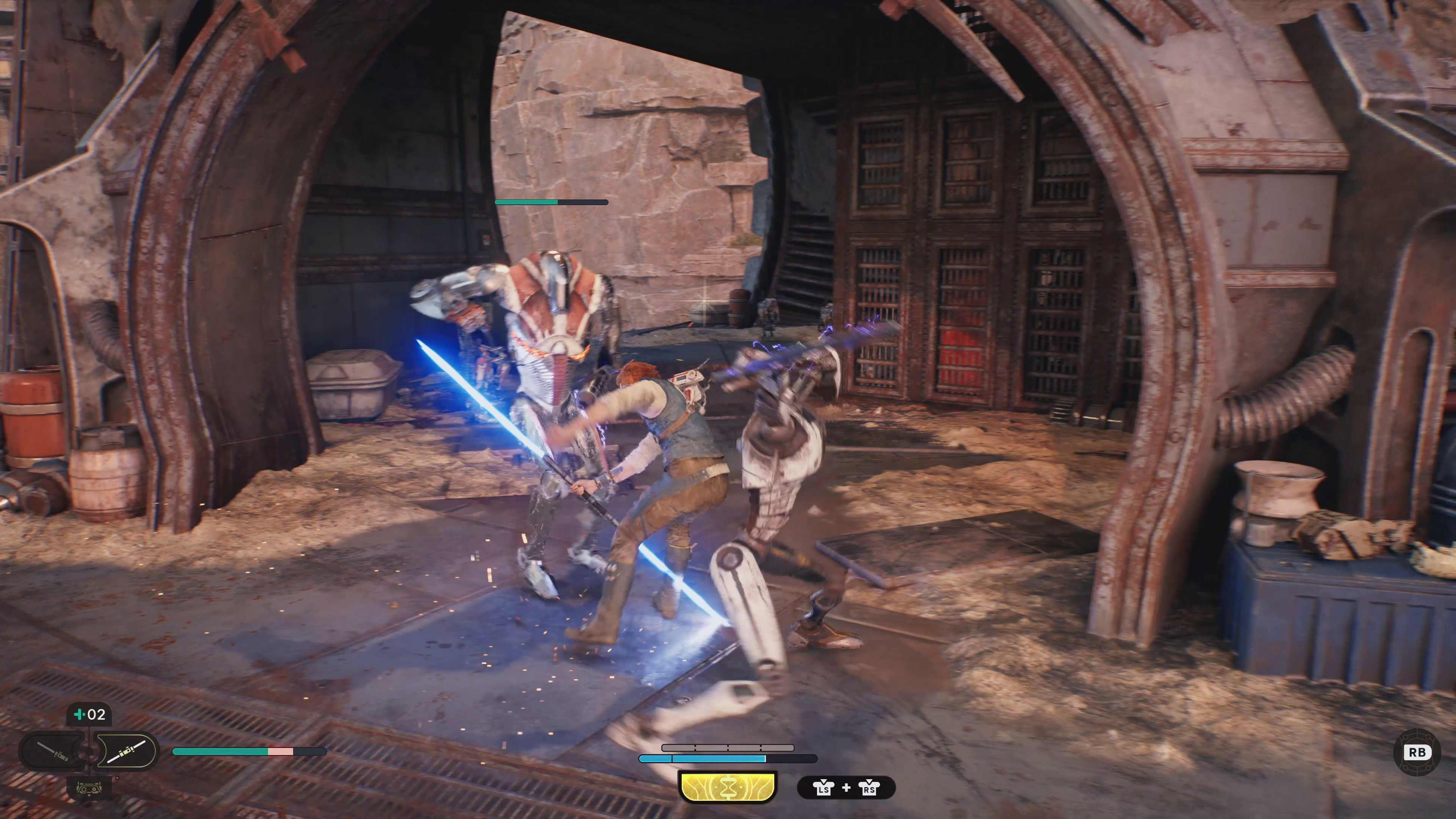
Jedi academy
The one aspect of Jedi: Survivor that hasn't been reimagined, but didn't really need to be, is combat. It has been enhanced, though, and is even better now that droids are in the mix. Cal has gotten a lot more lethal with a saber in the five year time skip—limbs are chopped off from heavy attacks (troopers and droids alike), giant bugs can be entirely bisected, and sometimes Cal will unholster his blaster for a finishing execution that I assume he learned watching John Wick.
I'm impressed at how Respawn has managed to make what is essentially the same saber feel like five distinct weapons.
Oh right, Cal has a blaster now. It's one of the two saber stances new to Jedi: Survivor for a total of five: single saber, double-sided saber, dual saber, blaster, and crossguard. I'm impressed at how Respawn has managed to make what is essentially the same saber feel like five distinct weapons—each stance has a unique moveset, its own upgrade tree and inherent tradeoffs. The double-sided saber's long reach, for instance, makes it the undisputed king of crowd control but doesn't hit as hard. Dual sabers deal a lot of damage quickly, but you have to commit to long combos that expose Cal's flanks. Crossguard stance (the Kylo Ren one) is basically a medieval claymore: devastating chops and cleaves that take a long wind up to connect.
I ended up maining the blaster and crossguard stance for the majority of the game because they were easily the most fun to experiment with. The blaster stance in particular feels so delightfully un-Star Wars. Half of your attacks become ranged and you replenish blaster ammo by dealing saber damage. The saber attacks in blaster mode mimic fencing moves, which don't hit as hard as the dedicated single saber stance, but let you keep your distance while recharging your gun.
The blaster has a nice give-and-take that's consistent with every stance, though most weaknesses can be overcome with upgrade points. The weapon trees are a healthy mix incremental updgrades and entirely new moves, like a flurry of stabs that rapidly recharges Cal's blaster. After maxing out the blaster tree and equipping a few complimentary perks, I managed to clear entire rooms without swinging a saber—definitely the jedi equivalent of a cheesy magic build in Elden Ring, and I feel no shame.
Jedi: Survivor's combat clicked way better with me than Fallen Order's. Stances are part of it, and having easily three times more types of enemies is nice, but honestly, I like that it's easier. I hardly ever lost to a normal group of enemies and when I did, those shortcuts got me back to the action in no time. Health stims are easier to find and several are doled out by simply progressing the story, which actually balanced out nicely. On default difficulty I usually had enough health stims to just barely squeak through a tough fight.
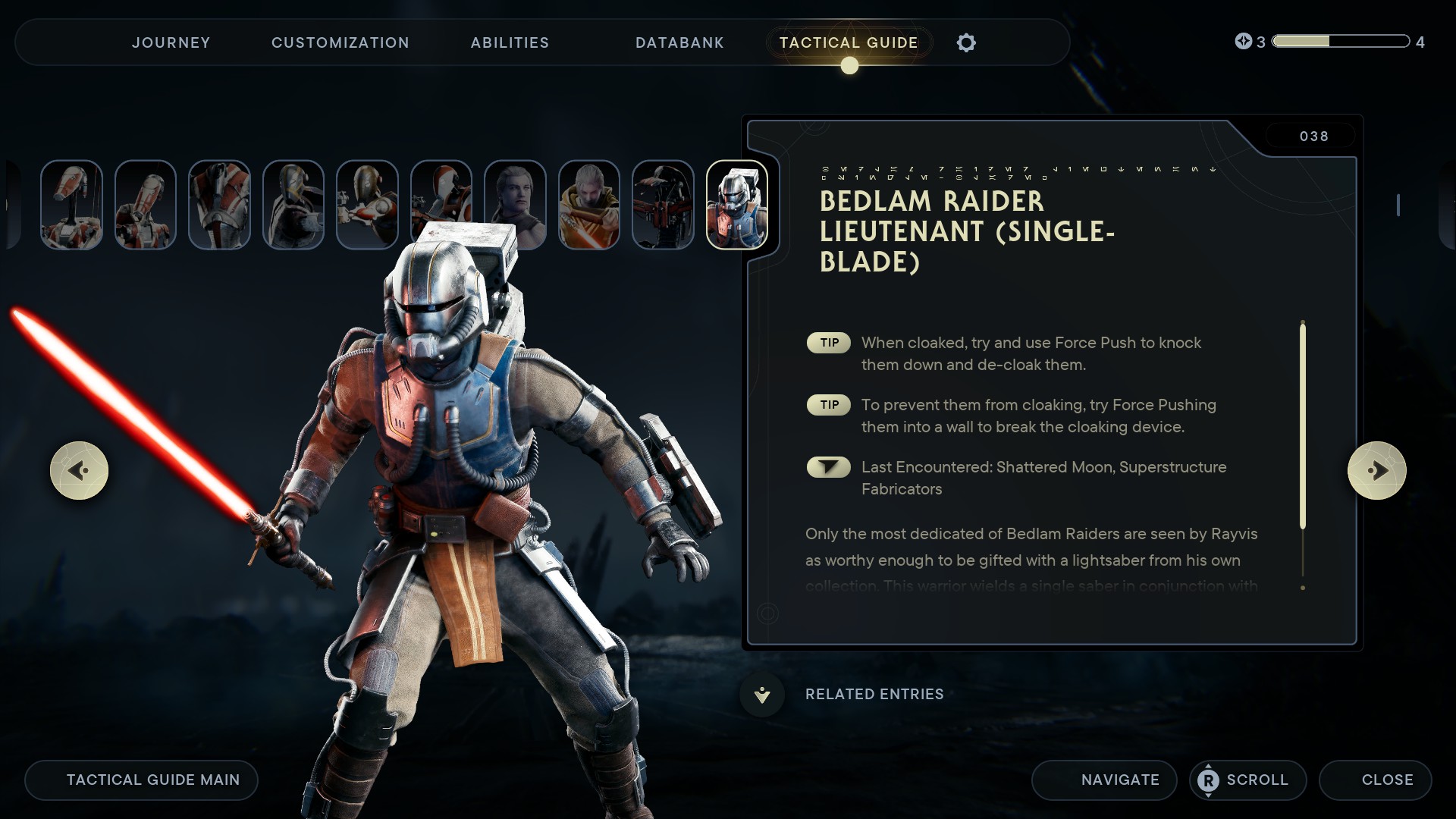
Rough go
The only thing that threatened to ruin my good time were the constant performance issues with the PC version. Even with Nvidia's latest driver specifically optimized for the game, my framerate regularly slowed to a crawl at very annoying moments. Stepping through doors sometimes triggers double-digit framerate drops for ten seconds or more. Cutscenes often plummet to 15-20 fps, cut off or overlap dialogue, and usually don't recover until I get control back.
I'm no Unreal Engine expert, but the worst slowdowns always seem to occur when the game's loading stuff in the background. Using the galaxy map on Cal's ship turned into a slideshow every single time—presumably because it's begun loading the planet I'm about to travel to. Performance in the most open parts of Koboh is pretty bad, too. On an RTX 2080 Super, i9-9900KS 4.00GHz, and 32GB RAM, I was lucky to squeeze a 35 fps average in the semi-open world. Isolated levels ran flawlessly at 80-90 fps, so there's clearly something up with the way Respawn is drawing big spaces. I briefly tried one other machine (RTX 3060, Ryzen 7 5700G, 16GB RAM) and had the same problems.
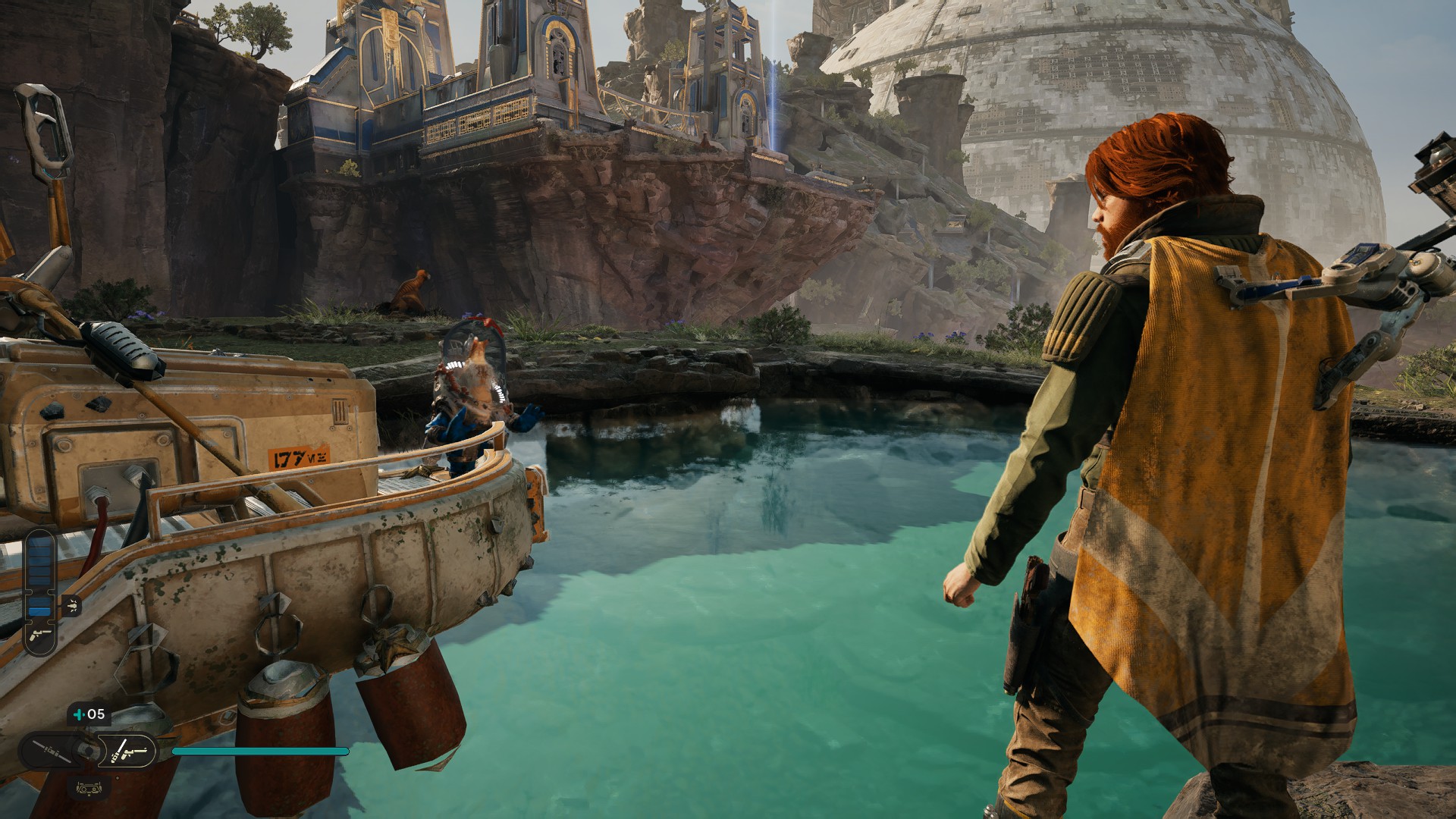
Fiddling with graphics options didn't help much, either. There's no native option to limit the framerate, but the Nvidia control panel did the trick. The only upscaling option is FSR 2.0, which usually failed to improve my fps but always succeeded in making Cal's face blurry and unintelligible in motion. I've never missed DLSS more.
For what it's worth, there's a pre-release patch coming a few days before launch, and among the patch notes EA shared with press is "performance improvements across all platforms." Hopefully it'll help, but I'd be surprised if all of those framerate drops disappeared overnight. We are living in a time of bad PC ports, after all.
Unacceptable performance aside, the good news is I still had a great time. Jedi: Survivor is a bigger, bolder game than its predecessor that prioritizes tight level design over map scale, a rarity in an age of sprawling sandboxes. This is Respawn firing on all cylinders, having finally figured out what works in its weird soulslike adventure format.
Star Wars Jedi: Survivor is an excellent sequel and a fun Star Wars story, but maybe wait for better performance.

Morgan has been writing for PC Gamer since 2018, first as a freelancer and currently as a staff writer. He has also appeared on Polygon, Kotaku, Fanbyte, and PCGamesN. Before freelancing, he spent most of high school and all of college writing at small gaming sites that didn't pay him. He's very happy to have a real job now. Morgan is a beat writer following the latest and greatest shooters and the communities that play them. He also writes general news, reviews, features, the occasional guide, and bad jokes in Slack. Twist his arm, and he'll even write about a boring strategy game. Please don't, though.
